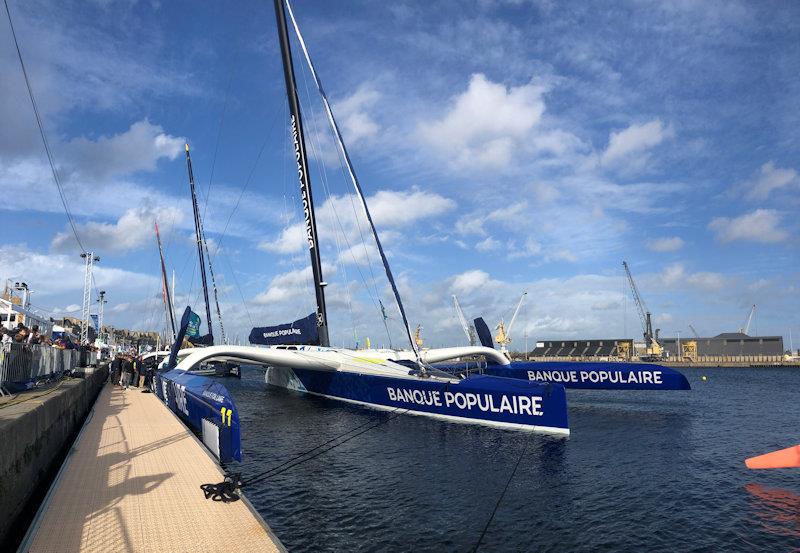
IMOCAs and Ultims primed for the Transat Jacques Vabre
by Cyclops Marine 27 Oct 2023 14:00 BST

Banque Populaire XI uses Cyclops wireless load sensors © Cyclops Marine
As you stroll through the bustling Transat Jacques Vabre race village, amidst eye-catching foils, striking aero-efficient designs, towering masts and a myriad of colours, it's easy to overlook some vital little details.
The new generation of IMOCA 60 is a high performance sailing machine - primed for the harshest conditions in the world. But, even with all of this power at their disposal, teams opt for further enhancements that allow them to supercharge performance and harness their yacht's full potential.
With bigger foils and radical new designs, the IMOCAs are lifting high out of the water and flying through the swell at incredible speeds. Over a 5400 mile race like the TJV, it is vital to fully exploit passages when the going is good, and with the ability to hit optimal settings as quickly and consistently as possible, teams can eat up the distance and open up big gaps ahead of their competition.
This is where Cyclops wireless load sensors come into their own. Having become almost ever-present across the IMOCA fleet, Cyclops load data is one of the most important inputs for many teams, amongst a host of sensors and alarms onboard. With the majority of the top teams using the sensors, four out of the top five finishers at last month's 48H Azimut were Cyclops customers. They have also spread to the Ultim fleet, in which Banque Populaire XI and Sodebo Ultim 3 both use Cyclops.
Wireless load sensors are available for a range of applications, but among the IMOCA fleet, smartlink sensors for soft lines are extremely popular.
What makes smartlink so useful is the ability to install the sensors quickly into your existing rigging, immediately verifying your settings with assured accuracy. Sailors view Cyclops data live in-race, as numbers are sent via Bluetooth to onboard instruments, and can also be viewed on a mobile app.
The best sailors have a great feel for the conditions and their boat, but they're also meticulous with preparation. By using the sensors in testing and training and learning from past races, they create a bank of optimal load numbers they need to hit to excel in different conditions. Having studied the course and expected conditions, they'll have a good idea of the numbers they'll need to hit, and getting to that number quickest when things change can mean winning or losing.
If things don't go as expected, going back to the drawing board and hitting a known setting is also a huge comfort. Darkness, fatigue and harsh conditions can also compound the challenge of maintaining a proper setup, and staying proactive to make adjustments as conditions change. Having highly accurate load data removes guesswork, allowing you to take well-needed rests (as you know your settings are ideal), even if you can't see your rigging and sails.
With their soft lines monitored by smartlink, many teams also have Cyclops Load Pins in their standing rigging, for a total picture of the dynamic balance of their rig and sail set up. With this combination of technologies, the world's best are as equipped as possible for the unpredictable nature of an offshore challenge like this, when reacting swiftly is imperative.
Avoiding Breakage
The IMOCAs and Ultims are increasingly pushing the very boundaries of what's possible, but for these transoceanic record breakers, there's always a looming concern.
In high-stakes races like this, breakage isn't just a game-changer; it's a possible game-ender. With Cyclops helping teams push their limits, they'll also have their maximum loads in mind, ensuring they remain on the safe side of extreme, preventing unforeseen damage and making it to the finish in good shape.
With raw speed, strategy, safety, and technological prowess front and centre, uptake of the technology has been strong in Grand-Prix fleets like IMOCA. But these are the central tenets at all levels of sailing, and Cyclops have made wireless load sensors accessible and affordable, so everyone from professionals to weekend dinghy sailors can use them to supercharge performance.
The Cyclops range caters for yachts large and small, and for every level of the sport, inshore and offshore.
Find the sensor for your boat, or contact Cyclops for a consultation.